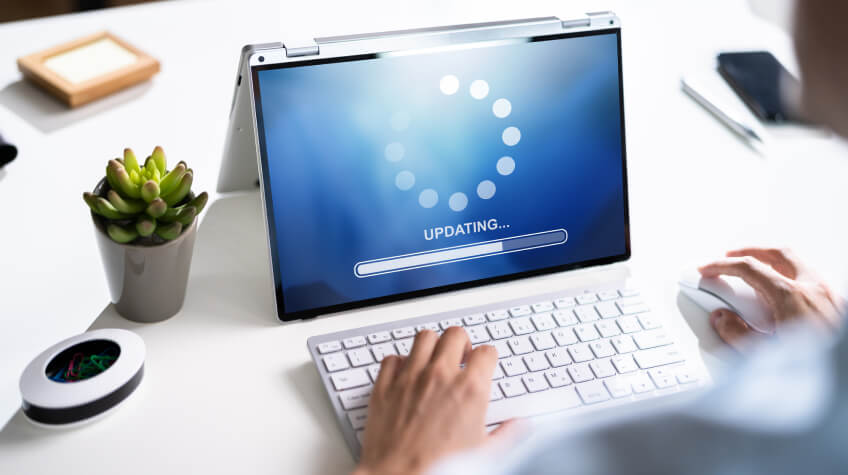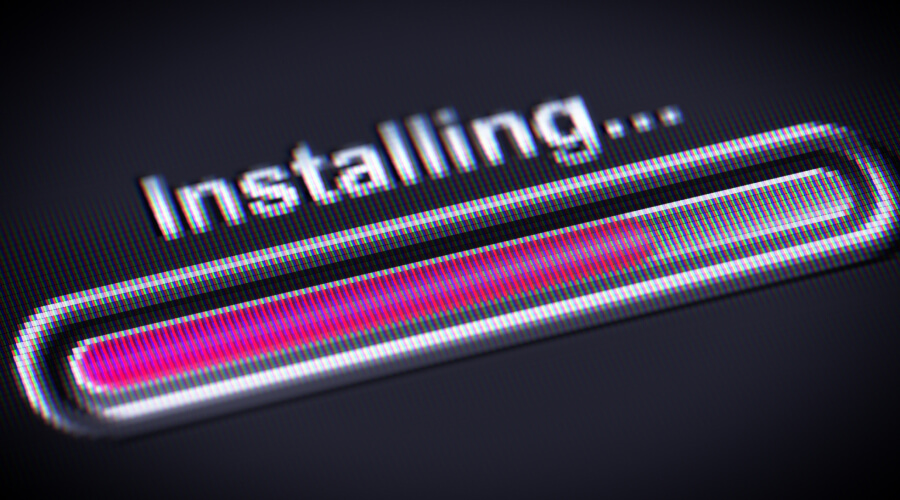
Leveraging software technology has recently become popular as business owners seek to stand out. A software solution lets you complete tasks more efficiently, streamline operations and optimize your business. Software solutions can help automate business processes such as accounting, marketing, staff hiring and onboarding, customer support ticketing, payroll software, and asset management. To remain updated with the newest features of the softwares, regular software installation and maintenance is also essential.
Today, most computers and mobile devices have several built-in software for different processes. But sometimes, a computer may not have the application you want for a specific task for your business. So, what happens in such a case? You’ll have to install the new system you want on your computers.
It isn’t just enough to install the software; you’ll need to maintain it, the process of updating the installed software to improve its performance and fix any errors. Software maintenance is also a good way to prevent system breakdown. If you don’t maintain or update your software, you’ll be stuck with outdated versions of applications, which may be more vulnerable to online attacks. You can find a janitorial cleaning software to help maintain your business systems.
This article outlines the best practices for software installation and maintenance. They include the following:
1. Decide Whether You Need That Software
Before installing software into your computers or smartphones, evaluate whether you need it. Apart from occupying space on your computer, the software will also attract extra costs in the form of maintenance. Confirm that you need to install new software to ensure you aren’t adding unnecessary expenses to your business.
That said, there are different software that serves the same purpose. For instance, you can use thousands of applications for business messaging. The question to ask is; do you need to install all this software when they all serve the same purpose? To avoid many applications on your computers and save money, only install the necessary software.
2. Always Install A New Software From A Reputable Vendor
Today, every vendor claims to provide the best software products and related services. But some aren’t genuine; they’re scammers finding ways to steal confidential information and money from clients. To avoid such problems, always install software from a trustworthy vendor.
Asking for recommendations from other businesses is a good way to find the best Managed IT services in Woodland Hills where you can purchase your software. Therefore, engage with other business owners and managers to find out where they purchased the software they use. From there, list all the potential vendors, research them individually and install from one that best meets your needs.
Also Read: Best Software Development Company in the USA
3. Confirm The Software You Want To Install Is Compatible With Existing Systems
If you already have other applications in your business system, you may need to install compatible software. One disadvantage of installing software incompatible with other computer programs is that it’ll hurt your operational efficiency. It may also require you to replace the entire business system to accommodate the new software, which attracts additional expenses.

Therefore, before installing any new software, research to ensure it’s compatible with all existing computer applications. It should also be designed to run on different browsers, operating systems, and mobile devices. And more importantly, the software should integrate well with your business computers. This way, you can improve your peace of mind knowing that all systems will be harmonious.
More Tools: Best Video Editing Software
4. Follow The Installation Guide Manual Provided
Once you purchase new software, the vendor will provide a guide manual and a document with instructions on installing the application. Even if you’ve previously installed similar software, reading the guide manual is always good. The technological world is evolving quickly; therefore, a software solution you used a few months ago might differ greatly from the one you want to install. Hence, ensure you read the installation instructions properly.
Apart from the installation, reading instructions on how to use the new system is vital. It guides you in onboarding and helps you understand the software and how to use it. Without reading the guide manual, it’d be impossible to benefit from the new technology. So, reading an installation and a user guide manual shouldn’t be an option to bypass but rather a necessary process.
5. Regularly Update Your Software
It’s advisable to update the software to help maintain it. And for a good reason, updating software helps protect your business against online attacks. Outdated software versions are more vulnerable to cybersecurity threats than new ones. Regularly updating your software can strengthen your cybersecurity strategy and safeguard your business against unauthorized access.
An automation system update application is one of the best ways to keep your software up to date. Regularly updating software can be overwhelming and time-consuming. Automatic system updates will help update the software without any human touch. Therefore, employees can focus on other important tasks, which improves the company’s overall productivity.
6. Regularly Evaluate Sofware Performance
Evaluating software performance is important to ensure it continues to perform as intended. Ensure you regularly evaluate key metrics like uptime and user feedback to identify risks and take corrective measures to address the issues. This way, you can optimize the performance of the software.
Besides, regular evaluation of the software performance allows you to make informed decisions about the changes and improvements you may want to make to the software. Therefore, ensure you monitor and evaluate the software’s performance occasionally.
7. Document The Software
Documenting software is crucial for its maintenance and understandability. It includes the name of the software and its components, which helps in identifying and resolving issues. Proper documentation also serves as a reference for developers, enabling them to understand the system better and make necessary changes. It is a collaborative tool that facilitates communication between developers and users, ensuring that the software is up-to-date and meets the user’s requirements.
Overall, software documentation is an essential practice that improves the quality and longevity of the software.
Related Blog: OCR Text Scanner: A Fast and Accurate Software
Takeaway
Leveraging software technology is promising for your business to continue thriving. It entails using automation tools to optimize business processes. However, you must follow the right steps when installing and maintaining the software. Implement all the strategies in this article when installing and maintaining your business software.






